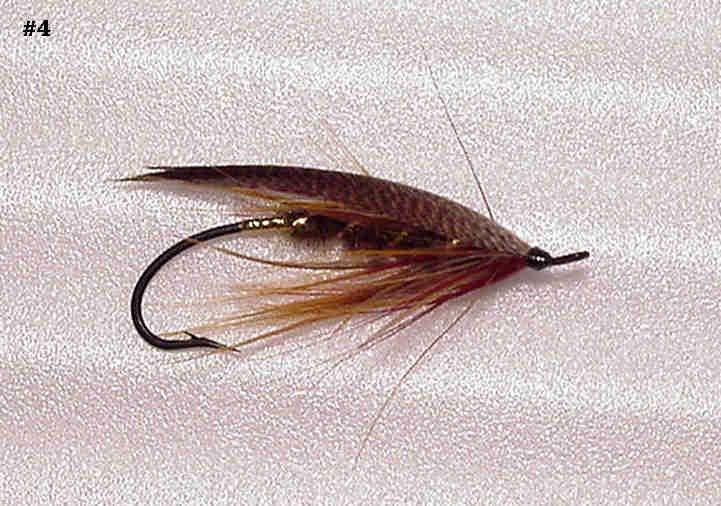
On The Fly
"Fly tying is a school from which we never graduate"
TYING NEWS
Chet Conklin, Fishing Department Manager at the Medford Sportsman's Warehouse, will be our featured instructor at the December 9th SOFT meeting. This will be an Entomology 101 class as it applies to the fly tier. This should be interesting and informative. I encourage novice and experienced tiers alike to drop by the second Tuesday of each month at 6 p.m. for a fun evening. We have plenty of room for everyone. If you are interested in this educational experience, contact me and we will add your name to our e-mail notification list. We can then let you know who, when, and what materials to bring.
 PATTERN OF THE MONTH - Lady Caroline (Poor Man's)
PATTERN OF THE MONTH - Lady Caroline (Poor Man's)
Hook: Daiichi 2441 or equivalent standard salmon/steelhead hook, size 6-2.
Thread: Black 6/0.
Tag: Flat silver tinsel, small.
Tail: Reddish brown Golden Pheasant flank barbs.
Body: Seal Substitute, brown/olive.
Rib: Flat silver tinsel.
Hackle: Pheasant rump.
Throat: Reddish brown Golden Pheasant barbs.
Wing: Bronze Mallard.
Head: Black thread.
Tying Instructions:
1) Start the thread two eye-widths back from the eye. Lay down a thread layer covering 2/3 the shank length.
2) Tie in the flat tinsel and wind it 6 turns back toward the hook bend to just above the hook point, and
then forward to the thread. Tie off and let the tinsel hang.
3) Form a dubbing loop, advance the thread to behind the eye, insert sparse amounts of seal substitute
dubbing evenly into the loop, twist the loop into a rope and wind it forward to a point just behind the
hanging thread. Tie off and trim.
4) Wind the flat tinsel forward in 5 evenly spaced turns. Tie off and trim.
5) Select a pheasant rump feather with barbs long enough to reach past the bend of the hook. Prepare the
feather and tie it in at its tip. Fold the barbs back and wind two turns. Tie off and trim.
6) Select a bunch of pheasant flank barbs with barbs long enough to reach the hook point. Tie them in at
the bottom of the hook to form a beard. Trim the butt ends.
7) Select a slip of bronze mallard from each of a matched pair. Mount the first slip on the backside of the
hook and the second on the front side. The two sides should form a tent shape with the peak at the tip of
the hook and the tips should reach the end of the hook. When you are satisfied with the position, tie off
and trim the butts.
8) Form a small, neat head with black thread. Whip finish the thread and apply cement.
The original Lady Caroline spey fly is a traditional Atlantic salmon fly and derives its
name from Lady Caroline Gordon-Lennox, who was the daughter of the Duke of Richmond and Gordon at Gordon
Castle, Banffshire County, Bellie Fochabers Parrish, Scotland. This pattern is legendary among Atlantic
Salmon flyfishers with many versions and variations developed. It has a loyal following on our west coast
for Pacific salmon and steelhead.
The photograph shown and the list of materials in this article are for a modified version
that I will call "The Poor Man's Lady Caroline." Instead of using expensive and hard-to-find materials, it
incorporates affordable and common materials available to most tiers. Substituting these materials should
in no way change the flies' appearance and ability to catch fish. Many tiers shy away from spey style flies
because of the use of exotic materials. For the Lady Caroline fly, if you don't have Golden Pheasant use
Ringneck, and if you don't have bronze mallard try mallard flank or teal.
TYING TIPS
The Lady Caroline had a low silhouette, accomplished by keeping materials sparse and
thread wraps minimal. Leave plenty of room behind the eye, allowing space for each material to be tied in
ahead of the other rather than on top of each other. Trim all materials on a taper to reduce bulk. Tie some
up, give them a test flight and let me know how you do.
Tie One On,
Dan Kellogg (you can contact me at FLYGUY@EZNORTHWEST.COM)